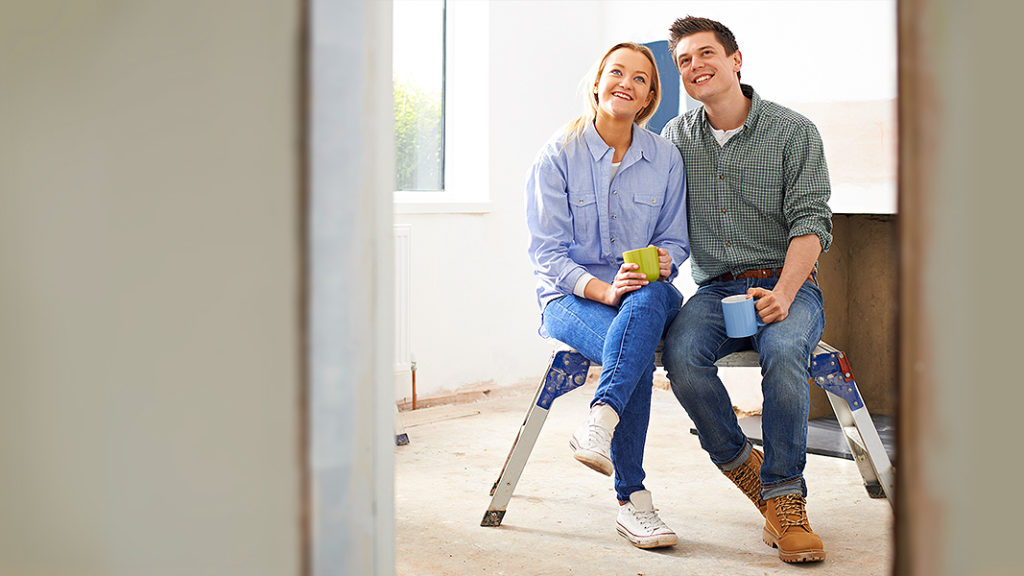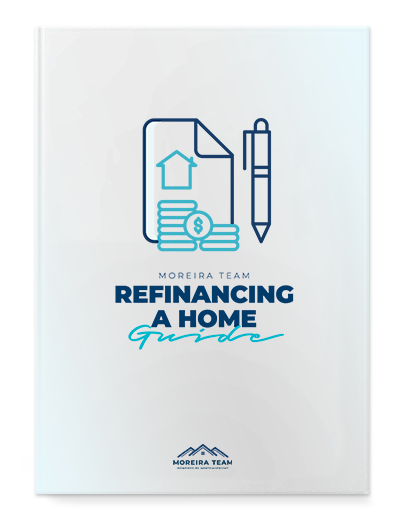In this article
It can be very tempting to buy a “fixer-upper” home. There is generally less competition from other buyers and you can often get a very good price. However, the renovation costs can add up and need to be factored into your overall financing. Rather than getting one mortgage loan for a home purchase and a separate loan or line of credit for the renovations, you can do both together with an FHA 203k loan. This program allows you to buy and fix up a home with one affordable mortgage.

What is an FHA 203K loan?
An FHA 203k Loan is a mortgage program backed by the Federal Housing Administration (FHA). It provides funding for both the home purchase and certain repairs or upgrades you want to make to the property. This loan program is ideal for home buyers who want to buy a fixer-upper and are willing to make the repairs. Perhaps you are on a budget and this is the best way to afford a home. Or, you just see the potential in a property and know a rehab project will help you make it the home of your dreams. Run-down properties can be purchased cheaper than those in good shape, so this approach could save you money.What’s great about a fixer-upper is that you can boost its home equity very quickly. You are investing in the renovations and repairs, thus increasing its value significantly compared to the original purchase price. You can recoup your rehab costs in the form of equity..
Why apply for a FHA 203K loan?
Applying for a 203(k) FHA loan can be a beneficial choice for various reasons, especially if you’re considering purchasing a home that needs significant renovations or repairs. Here are some compelling reasons to apply for a 203(k) FHA loan:
Financing for Home Renovations: The primary purpose of a 203(k) FHA loan is to provide financing for both the purchase of a home and the necessary renovations or repairs. This can be particularly advantageous if you’re interested in a fixer-upper or a property that doesn’t meet conventional lending requirements due to its condition.
One Loan, One Mortgage: With a 203(k) loan, you can roll the cost of renovations or repairs into your mortgage, resulting in a single loan with one monthly payment. This streamlines the financing process and simplifies budgeting for your home improvements.
Low Down Payment: Like other FHA loans, the 203(k) program allows for a relatively low down payment, typically around 3.5% of the home’s purchase price. This makes homeownership more accessible, even when taking on significant renovation projects.
Flexible Credit Requirements: FHA loans are known for having more lenient credit score requirements compared to conventional loans. While there are still credit standards to meet, they may be more attainable for individuals with less-than-perfect credit.
Renovation Choices: You have flexibility in choosing the renovations or improvements you want to make, subject to certain FHA guidelines. This allows you to customize the property to your preferences and needs.
Increased Property Value: By using a 203(k) loan to renovate or repair a property, you have the potential to increase its value. This can be an excellent investment, as it can lead to greater equity and potentially higher resale value in the future.
Interest Rates: FHA loans often come with competitive interest rates, which can save you money over the life of the loan.
Accessibility: These loans are available to a wide range of borrowers, including first-time homebuyers and those who may not qualify for conventional financing due to the property’s condition.
Assistance for Homeowners in Distressed Areas: 203(k) loans can be particularly beneficial in revitalizing distressed neighborhoods and communities by facilitating the rehabilitation of older or neglected properties.

5 Simple Steps for Refinancing Your Home
If you are planning to refinance this is a must read guide. It will walk you step-by-step through the process and let you know what to expect along the way.
See GuideHow does a FHA 203K loan work?
After your initial 203k Loan approval, you will then choose a contractor and get bids for the repairs and/or renovation plan. The lender will review and approve these costs before issuing a final approval. Home appraisals and home inspections will also be required. A good lender will be able to walk you through this entire process to make sure all the key details and steps are covered properly.
The loan will be funded, allowing you to purchase the property and make the repairs/renovations before you move into your new home.
Here is a more detailed breakdown of the most important steps:
Define Your Repairs/Renovations: You will first need to decide which home improvements you plan to make. There are certain qualifying repairs and cosmetic improvements which are allowed and some that won’t be covered by FHA 203k funding.
Select Your Contractor: Get bids from licensed and insured contractors to complete your specified list of repairs and/or cosmetic improvements. The contractor must be willing and able to follow the 203k rehab rules and submit specific paperwork.
Submit the Plans to Lender: Submit your renovation plan and contractor bids to the lender for approval.
Complete Funding & Construction: The lender will approve financing for the loan and the contractor can begin work. Once everything is complete, you can move in and enjoy your new home!
Types of FHA 203K loans
Here is a brief summary of the two types of 203K loans, Streamlined and Standard including the best features of each of them.
Streamline 203K Loan
This loan is often used for less extensive projects compared to the Standard 203(k) Loan. Key features of the Streamline 203(k) Loan include:
Limited Renovations: This loan is best suited for smaller renovation projects, such as kitchen or bathroom updates, roof repairs, flooring replacement, or other minor improvements that don’t involve structural changes.
Simplified Application Process: The Streamline 203(k) Loan streamlines the application process compared to the Standard 203(k) Loan. It typically requires less paperwork and documentation, making it more accessible for homeowners.
Lower Costs: Since it’s designed for less extensive renovations, the Streamline 203(k) Loan typically has lower associated costs in terms of fees and paperwork.
Faster Closing: The streamlined process often results in faster loan approval and closing, which can be advantageous for homeowners looking to complete their renovations promptly.
Loan Limits: There are specific loan limits for the Streamline 203(k) Loan, which can vary by location. These limits determine the maximum amount you can borrow for the purchase and renovation of the property.
Repairs Must Be Under $35,000: One of the primary restrictions of the Streamline 203(k) Loan is that the total cost of repairs and renovations must be under $35,000.
Property Must Be Habitable: The property you intend to renovate with a Streamline 203(k) Loan must be habitable during the renovation process. This means it should meet basic livability standards, and the repairs should not render the property uninhabitable.
Standard 203K Loan
The Standard FHA 203(k) Loan provides borrowers with significant flexibility in making repairs and renovations to a property, with some exceptions. While it allows for various improvements, there are a few restrictions to keep in mind:
Non-Permanent Changes: The loan is typically intended for permanent structural improvements and renovations. Non-permanent or cosmetic changes may not be eligible for financing. It’s designed to enhance the property’s functionality, safety, and value.
Luxury Amenities: As you mentioned, adding unnecessary luxury amenities like tennis courts and swimming pools may not be covered by the 203(k) loan. The program is more focused on essential repairs and renovations that contribute to the property’s livability and value.
Loan Limits: There are specific loan limits for the Standard 203(k) Loan, which can vary by location. These limits determine the maximum amount you can borrow for the purchase and renovation of the property.
Project Duration: The FHA 203(k) loan sets a time limit for completion of the project, typically within six months. This ensures that renovations don’t drag on indefinitely and that the property is restored or improved in a reasonable timeframe.
Who qualifies for a FHA 203K loan?
Here’s an overview of who qualifies for an FHA 203K loan:
Credit Score: While the FHA is generally more flexible than conventional lenders, you will still need a reasonable credit score. The specific credit score requirements can vary among lenders, but typically a minimum credit score of around 640 is required for a 3.5% down payment. If your credit score is lower, you may be required to make a higher down payment.
Down Payment: The FHA 203(k) loan program generally requires a down payment of at least 3.5% of the total project cost, including the purchase price of the home and the cost of renovations.
Debt-to-Income Ratio (DTI): Lenders will evaluate your debt-to-income ratio to ensure that you can manage the monthly mortgage payments and any other debts. Your total debt, including the expected mortgage payment, should not typically exceed a certain percentage of your income.
Legal Residency: You must be a U.S. citizen or a legal resident to be eligible for an FHA 203(k) loan.
Owner-Occupied Property: The property you intend to renovate with an FHA 203(k) loan must be your primary residence. These loans are not for investment properties or second homes.
Approved Property Type: The property can be a single-family home, a multifamily property (up to four units), or a condominium. The program may also cover some manufactured homes that meet certain criteria.
Work with Approved Lenders: FHA 203(k) loans are provided by FHA-approved lenders, so you’ll need to work with a lender authorized to offer these loans. Not all lenders participate in the program, so it’s essential to find one that does.
Documentation: You’ll need to provide documentation outlining the scope of the renovations you plan to undertake and estimates for the project’s cost. This information is crucial for loan approval.
In essence, the FHA 203(k) Loan is a valuable financing tool for more substantial and essential property improvements, including structural repairs, upgrades to plumbing, electrical systems, and other enhancements that enhance the home’s functionality and safety. It’s important for borrowers to work with qualified contractors and follow FHA guidelines to ensure that the proposed projects meet the program’s criteria and can be funded through the loan.
Before applying for a 203(k) FHA loan, it’s essential to consult with a lender experienced in these types of loans to ensure you meet the eligibility criteria and understand the specific requirements of the program. Additionally, it’s important to have a clear plan for the renovations or repairs you intend to undertake and to work with professionals who are knowledgeable about the 203(k) loan process.
Are You Ready to Make a Move?
It's FREE and takes less than a minute to see what you could get.
